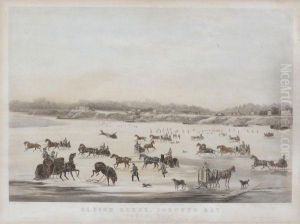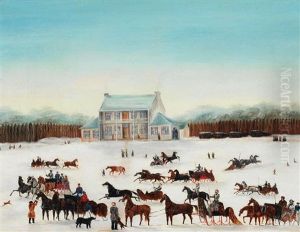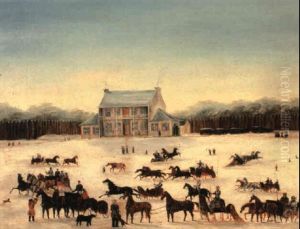J.T. Downman Paintings
John Downman was a British portrait painter who became renowned for his work during the late 18th and early 19th centuries. Born in 1750 in Ruabon, Wales, Downman was introduced to the world of art at a young age. He studied at the Royal Academy Schools in London, after initial artistic training under Benjamin West, a history painter of American descent who became the second president of the Royal Academy.
Downman's career began to flourish in 1770 when he started exhibiting his work. His style was characterized by delicate and refined drawings and paintings, often in pastel or watercolor, which were highly fashionable during his time. He became particularly known for his portrait miniatures, a genre that was very popular among the gentry and aristocracy of the period. Downman's work distinguished itself through the capture of his sitters' character and grace, making him a sought-after portraitist.
He traveled around England, taking up residence in various cities including Cambridge and Exeter, where he found a number of patrons. Downman's clientele included many notable figures of the time, and his work provides an extensive record of the social elite of the late 18th-century Britain.
In 1781, he was elected an Associate of the Royal Academy, an honor that recognized his contribution to the arts. Despite his success, Downman faced financial difficulties in later life, in part due to the changing tastes in art and the advent of new styles. Nevertheless, he continued to exhibit at the Royal Academy until 1819.
John Downman passed away in 1824 in Wrexham, Wales. His legacy endures through his portraits, which are held in many public and private collections, offering a window into the styles and sensibilities of his era. His work is noted for its historical value as well as its artistic merit, capturing the subtleties of expression and fashion of the Georgian period.


